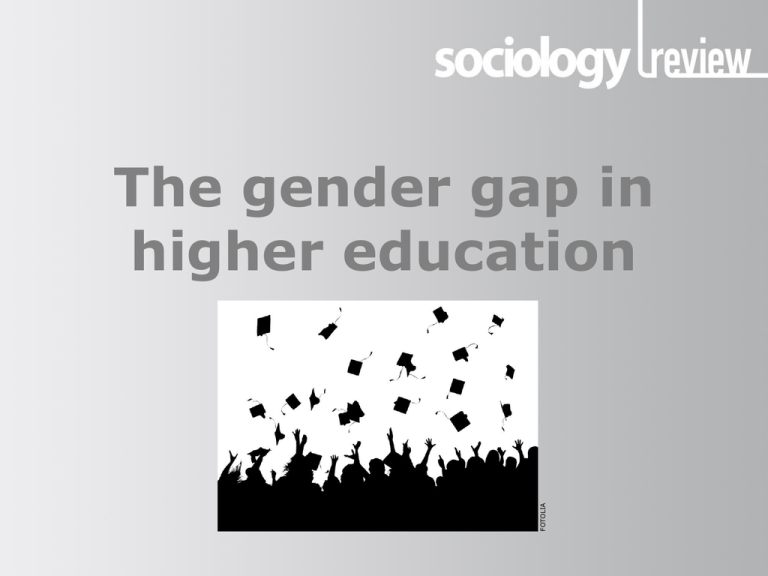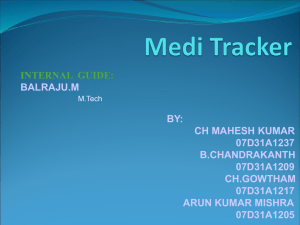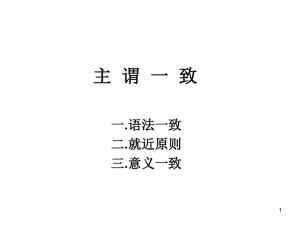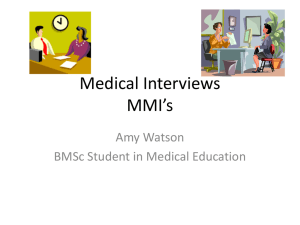The gender gap in higher education
advertisement

FOTOLIA The gender gap in higher education The gender gap in higher education Gender and higher education Once an exclusively male privilege, higher education is becoming an In the 2010–11 academic year, the students who enrolled at university There are currently 20 UK institutions with twice as many female In autumn 2012, females were one-third more likely to start a degree increasingly female experience. in the UK were 55% female and 45% male. undergraduates as there are male undergraduates. course than their male counterparts. The gender gap in higher education Admissions There has been a 13% fall in admissions to higher education since the introduction of higher fees in October 2012. However, the fall in admissions from young men has been about twice that of young women. What explanations can you think of for this? UCAS states that 2012 entry rates were 24.6% from males and 32.5% from females. Only Oxbridge seems to be bucking the trend, with slightly more male than female students. Why might this be the case? The gender gap in higher education Subject choice There are still gender differences in subject choice, although these are Degree subjects dominated by women include veterinary science and However, men still outnumber women in computer science, engineering not always what you might think. subjects allied to medicine and education. and technology. The gender gap in higher education Students obtaining undergraduate degrees 2011–12 (1) Subject area % female % male Medicine and dentistry 57.6 42.3 Subjects allied to medicine 82.1 17.9 Biological sciences 60.8 39.2 Veterinary science 79.4 20.6 Agriculture and related subjects 63.0 37.0 Physical sciences 42.6 57.4 Mathematical sciences 42.2 57.8 Computer science 17.4 82.6 Engineering and technology 14.3 85.7 Architecture, building and planning 29.7 70.3 The gender gap in higher education Students obtaining undergraduate degrees 2011–12 (2) Subject area % female % male Social studies 64.5 35.5 Law 61.7 38.3 Business and administrative studies 51.4 48.6 Mass communications 55.4 44.6 Languages 68.9 31.1 Historical and philosophical studies 54.4 45.6 Creative arts and design 61.7 38.3 Education 80.4 19.6 Combined subjects 60.1 39.9 Source: Higher Education Statistics Authority (HESA) The gender gap in higher education Reasons for the change Not enough research has yet taken place to identify the reasons for the increasing undergraduate gender gap. Below are some possible reasons. Women are increasingly aware of the importance to their future of a good academic qualification. Many women no longer see their future as simply or mainly a wife/mother, and as someone dependent on a male partner’s salary. Seeing themselves as the future breadwinner and main supporter of a wife and family, men are more concerned than women about starting working life with a university-accrued debt. They may also be more concerned about levels of graduate unemployment, though it is not clear why this is the case. There have been relatively few programmes aimed at getting more males into higher education. There are links to attainment patterns in school. Girls now outperform boys and are more likely to stay on to take A-levels. The gender gap in higher education What happens to graduates? A report was published in February 2013 by the Higher Education Careers Services Unit (HECSU). Researchers analysed data from a longitudinal study of 17,000 recent graduates in full-time employment. They looked at how much these graduates earned in 2012. The findings showed that female graduates were earning considerably less than their male counterparts across all degree subject areas — even when comparing men and women from the same types of university who had studied the same subjects. It also applied to subject areas where women’s participation rates are greater than those of men. This is despite laws designed to ensure equal access to jobs and pay. The gender gap in higher education Graduate pay (1) Jane Artess, of HECSU, gave the example of media-related subjects, where female graduates were no more or less numerous than their male counterparts and yet their earnings were typically lower. Looking at wages by sector, Artess said that the male lead in pay was persistent in both the public and private sectors, in graduate workplaces and in both graduate and non-graduate job roles. The only area in which female pay was equal to males was in the not-for-profit sector. The gender gap in higher education Graduate pay (2) Earnings Men Women Below £23,999 55.6% 70% Above £24,000 44.4% 30% Source: Higher Education Careers Services Unit, February 2013 The gender gap in higher education Women and higher education: the early years (1) Higher education for women has come a long way in the last 150 years. In 1869 three women — Emily Davies, Barbara Bodichon and Lady Stanley of Alderley — helped to establish Girton College, Cambridge, the first university college for women. However, it was not recognised by the university authorities, and was not allowed to be sited anywhere near the main colleges — in fact, it was set up in Hitchin, Hertfordshire. In 1880 another women’s college, Newnham, was established at Cambridge. The gender gap in higher education Women and higher education: the early years (2) At the time that Girton College was established, doctors thought that the female brain weighed 150 grams less than the male brain. They warned that excessive study would cause women’s wombs to wither and die, and they would become infertile. By 1910 there were just over 1,000 women students at Oxford and Cambridge. However, they had to gain permission to attend lectures and were not allowed to take degrees. It was not until 1910 that women were allowed to train as accountants and bankers. The gender gap in higher education Women and medicine: the early years Despite growing pressure from women to train as doctors, they were not allowed to do so. The work of Florence Nightingale showed that women could, however, be valuable when allowed to work as nurses. The first female doctor in England was Elizabeth Garrett Anderson. Her father paid for private lectures in medicine, as no medical school would admit her. She obtained her Doctor of Medicine degree in Paris in 1870 but it was not recognised by the British Medical Register. In 1874 the London School of Medicine for Women was opened by a group of women and more women began to train, but they faced extreme prejudice from both doctors and surgeons. Although medical training was permitted for women in 1876, many universities refused them access, and the Royal College of Surgeons refused to allow women to take any of its exams. The gender gap in higher education Women and medicine The medical profession finally allowed women to become doctors, but in 1900 there were only 200 female doctors in England — just 1%. Female doctors played an important role in the First and Second World Wars, but practising medicine was still seen as primarily a male role, with women more suited to nursing. As late as 1971, only 18% of UK doctors were female. In 2012, women made up 40% of all doctors, 42% of GPs and 28% of consultants. By 2017 the number of female doctors is expected to exceed that of males. However, demands on women regarding children and family life mean that women tend to shy away from areas such as surgery and anaesthesia, which typically involve long and unpredictable hours and on-call commitments. Thus, despite a vastly improved picture, gender differences do still remain.











